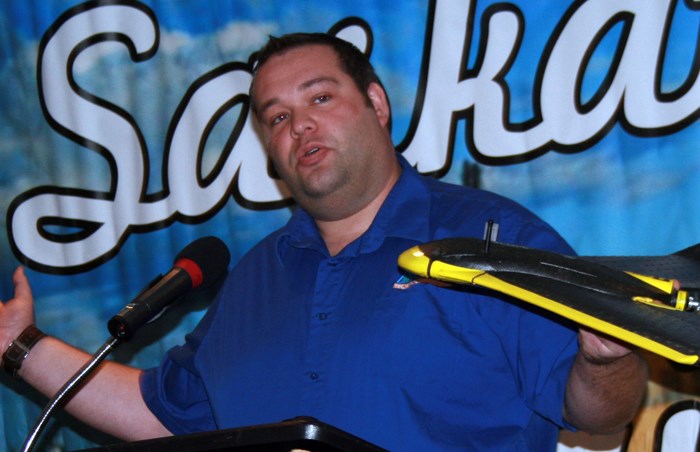Drones are still a relatively new technology, but there is a lot of interest from farmers in what they might offer agriculture.
“A lot of people have heard about them (drones) in the news,” said Warren Genik, with Ag Sky Technology during a presentation at the Sask Grains Expo last Wednesday as part of their Grain Millers Harvest Showdown in Yorkton.
Genik said farmers are curious about how drones might provide data for them on the farm as they look for ways to boost production in order to feed 9 billion people expected in the world by 2050.
One of the most obvious applications of drone technology is aerial imagery, said Genik, adding there have been various examples of aerial imagery application dating back decades. More recently people are familiar with it through applications such as Google Earth and Google Maps.
“It can be very low cost, if not free.” said Genik, adding “there’s a lot of historical imagery there.”
However, there are limitations in the sense such images are generally low resolution.
There is also manned-aircraft imagery, an area farmers are likely familiar with from farmstead photography taken from the air.
But of greater interest and more on-cram application comes UAVs (Unmanned Aerial Vehicle).
“They can be very cheap, under $1000 will get you set taking pictures,” said Genik, adding with a mounted camera a producer can capture images of crops, “or go find the cows on the back-40.”
Such units do have limitations though.
“They tend to have reduced range and flight times,” said Genik.
Fixed-wing UAVs have “have longer flights times typically,” said Genik, noting they can aerial map 400-plus acres on a single fight.
The fixed-wing units also operate well.
“Auto-pilot has come a long way on fixed-wing UAVs,” said Genik.
Still single engine fixed-wing UAVs are less common than multi-motored UAVS because they very expensive, costing from $30,000 to $200,000 depending on exact equipment included.
“It’s still cheaper than a tractor,” said Genik, but it does need to be used, and not left “sitting on a shelf.”
And there are Transport Canada regulations to work with too.
“The government of Canada is very open to use of drones in agriculture,” said Genik, “but there’s still rules and paperwork.”
Genik added in a lot of cases farmers might be better served hiring UAV services.
Fixed-wing UAVs are very light, made of foam, and simple to launch.
“You start it up and throw it in the air,” said Genik.
Landing too is rather simple.
“It belly lands. It lands right in the canola crop and just sits there,” said Genik.
In the air the applications to farming are interesting, ranging from crop health, to elevation mapping to drainage analysis on a field.
The diverse applications come by mounting different cameras on the UAV, said Genik, noting an infrared camera allows thermal mapping of a field.
In any application the key is that producers “get that bird’s eye view,” said Genik. “You see a lot of stuff you can’t see standing in the middle of your field.”
In terms of how the data might be used, Genik said infrared can show producer’s areas of greater weed infestation to allow targeted fall control.
Or by mapping the natural low water areas on a field a producer can plan how best to implement drainage.




